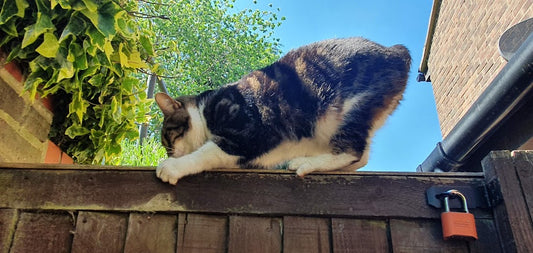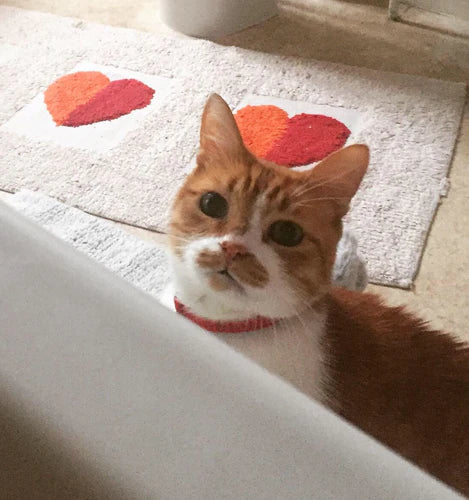Taking care of your cat's coat isn't just about keeping them looking fabulous—it's essential for their health and happiness. From warding off skin problems to managing shedding, understanding the different types of cat coats and patterns will help you with this vital part of cat care which is sometimes overlooked.
Whether you're a new cat parent or a seasoned feline specialist, this guide is your go-to for cat coat maintenance and the variety of fur patterns that make them uniquely adorable.

Cat Coat Types: Essential Grooming Tips
Short Coats: Sleek and Low-Maintenance
Short-coated cats, like the Siamese, Abyssinian, and American Shorthair, boast sleek, glossy fur that hugs their bodies. While these cats are relatively low-maintenance, they still benefit from regular grooming. A quick weekly brush can help manage shedding and spread the natural oils, keeping their coat shiny and more importantly, your furniture fur-free!
Medium Coats: Plush and Pampered
Medium-coated cats, such as the British Shorthair, Bengal, and Exotic Shorthair, have dense, plush fur that requires a bit more TLC. These kitties need brushing two to three times a week to prevent matting and manage shedding. It's not just about keeping them looking good—grooming sessions are also a great way to bond with your cat.
Long Coats: Luxurious Yet Demanding
Long-haired breeds like the Persian, Maine Coon, and Ragdoll are known for their luxurious, flowing fur. However, this beauty comes at a price: regular grooming is a must to prevent tangles and matting, which can lead to skin issues. Daily brushing keeps their coat in tip-top shape and minimises the dreaded hairballs—a common concern with these fluffballs.
Hairless Breeds: Special Skin Care Required
Hairless cats, including the Sphynx and Peterbald, may lack fur, but they still need special care. Their skin can become oily and prone to irritation if not cleaned regularly. Weekly baths help maintain skin health and prevent buildup. Plus, without a fur coat, these cats need extra protection from extreme temperatures and may require cat friendly suncream if venturing outdoors for prolonged periods, especially on their ears!

The 6 Types of Cat Fur Patterns: A Closer Look
Understanding your cat's fur pattern can help you tailor their grooming routine to best suit them, which in turn will help you not only monitor their health but also enhance their comfort and overall well-being.
Tabby Patterns
- Mackerel (Fishbone): Characterised by stripes of dark fur, this pattern often requires regular brushing to manage shedding.
- Blotched (Classic or Marbled): Features swirls and stripes that may hide dirt, needing careful grooming.
- Spotted: Unique spots that need routine grooming to prevent skin issues.
- Ticked: Fur with a gradient of colour, which may require special attention for even grooming.
- True solid coats are rare and typically uniform in colour. Even so, regular grooming is key to removing loose hair and preventing skin problems.
Bicolor Coats
- These cats feature two-tone fur, often a primary colour with white. The white areas can be prone to dirt and staining, requiring extra care.
Tricolour and Tortoiseshell
- Tricolor (Calico): Mostly found in females, these cats require regular grooming to manage different fur textures.
- Tortoiseshell: This blend of colours can conceal skin conditions, making regular checks essential.
- Cats with colourpoint patterns, like the Siamese, have darker extremities. Regular grooming helps maintain their coat's health and highlights their striking colouration.

Conclusion: The Critical Role of Regular Grooming and Care
Regular grooming is crucial for all cats, regardless of their coat type or pattern. It keeps their fur in prime condition and helps prevent issues like matting, skin infections, and hairballs. Grooming sessions also offer an opportunity to check for parasites or skin abnormalities, ensuring your cat stays healthy and comfortable.
For extra support, consider adding a dietary supplement like Antinol®, rich in Green-Lipped Mussel oil and omega fatty acids, to your cat's routine. These can improve coat quality, making maintenance easier and more effective.
Taking the time to understand and care for your cat's coat can lead to a healthier, happier feline friend!









